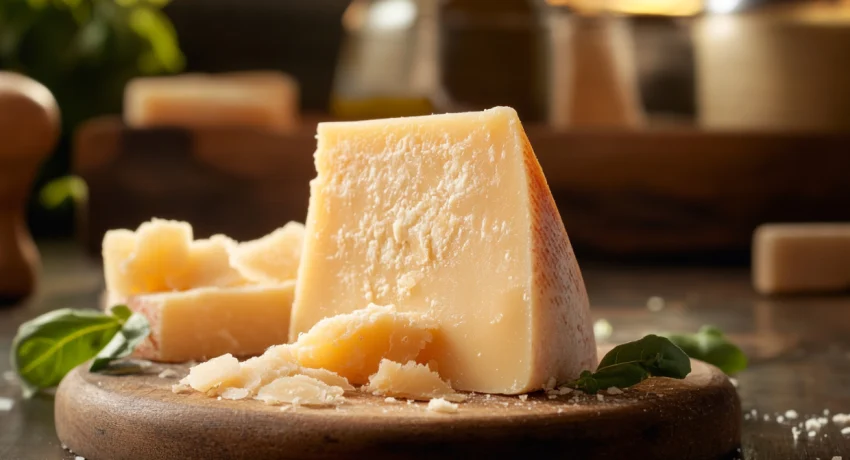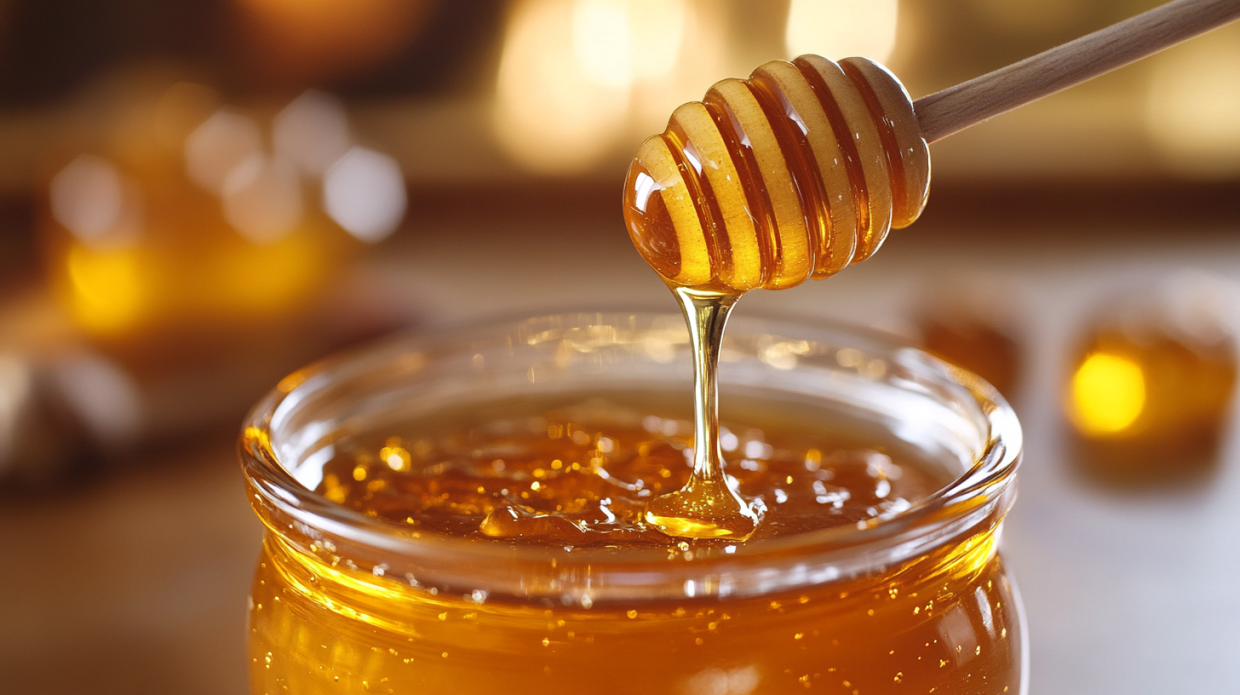
Kirkland Signature Parmigiano Reggiano Straveccho, 2 lb avg wt
- Parmigiano Reggiano Straveccho
- Aged over 36 months
- Block
- Random Weight (R/W): 2 lb avg
From Italian Tradition to Your Costco Cart: A Deep Dive into the World’s Most Beloved Hard Cheese
In the vast universe of cheeses, few command the respect and adoration that Parmigiano Reggiano does. Among the many brands available to consumers worldwide, Kirkland Signature Parmigiano Reggiano stands out as an exceptional balance of authenticity, quality, and value that has captured the hearts (and palates) of cheese enthusiasts everywhere. Today, I’m taking you on a journey through everything you need to know about this culinary treasure that’s hiding in plain sight at your local Costco.
When I first discovered Kirkland’s Parmigiano Reggiano, I was skeptical. Could a store brand really deliver the complex nutty flavors and crystalline texture that make this cheese so revered? The answer, as I quickly discovered, was a resounding yes. But what makes this particular offering so special, and why has it become a staple in so many kitchens across America?
What Exactly Is Kirkland Parmigiano Reggiano?
Let’s start with the basics. Kirkland Parmigiano Reggiano isn’t just another cheese – it’s the real deal. This isn’t a generic “parmesan” cheese; it’s authentic Parmigiano Reggiano produced in specific provinces of Italy under strict regulations that have been perfected over centuries.
The Kirkland Signature version is sold under Costco’s private label, but don’t let that fool you. This cheese undergoes the same rigorous production process as any other authentic Parmigiano Reggiano. Made from raw cow’s milk, salt, and rennet (a natural enzyme), each wheel is aged for a minimum of 24 months, developing those signature flavor crystals and complex taste profile that cheese connoisseurs chase after.
What separates real Parmigiano Reggiano from imitators is both the production method and the geographical location. True Parmigiano Reggiano can only be produced in the provinces of Parma, Reggio Emilia, Modena, and parts of Bologna and Mantua in Italy. It’s a protected designation of origin (PDO) product, meaning it’s legally protected and certified to ensure authenticity.
The cows producing the milk for this cheese must be fed primarily on locally grown forage, creating a terroir-specific flavor that simply cannot be replicated elsewhere. The cheese is made in copper-lined vats, formed into massive wheels (each weighing about 85 pounds), and aged in special warehouses where they’re regularly inspected and turned.
Is Kirkland’s Version the Real Thing?
This is perhaps the most common question I hear, and I’m thrilled to share that yes, Kirkland Signature Parmigiano Reggiano is 100% authentic, bearing the official PDO certification and fire-branded marks that verify its legitimacy. Each wheel bears the pin-dot pattern spelling out “PARMIGIANO REGGIANO” around the circumference of the wheel – the unmistakable sign of the real thing.
Costco partners directly with Italian producers to import genuine wheels of Parmigiano Reggiano. These wheels carry the consortium’s seal and are aged for a minimum of 24 months before being cut and packaged for Costco members. The cheese consortium in Italy is extremely protective of their product, and they would not allow the Parmigiano Reggiano name to be used on anything that doesn’t meet their exacting standards.
I’ve spoken with several cheese experts who confirm that Kirkland’s offering is indeed authentic Parmigiano Reggiano. The texture, taste, and even the appearance of the rind all pass the test. It’s not a domestic imitation or a similar-style cheese – it’s the centuries-old Italian treasure, delivered to your neighborhood warehouse store.
Where Can You Find This Culinary Gem?
The simple answer is: Costco! As a Kirkland Signature product, this cheese is exclusively available at Costco warehouses and through Costco’s online shopping platform in some regions. You’ll typically find it in the cheese section, often available in both wedge form and sometimes pre-grated (though I’ll explain later why the wedge is usually the better option).
Costco’s business model of buying in bulk directly from producers allows them to offer this premium product at prices that often make cheese lovers do a double-take. While availability can sometimes vary by location and season, most Costco stores carry Kirkland Signature Parmigiano Reggiano year-round.
I’ve found that during the holiday season, many Costco locations will feature special displays of Parmigiano Reggiano, sometimes even bringing in whole wheels for demonstration. It’s quite a spectacle to watch the traditional cracking open of a wheel using special cheese knives – a technique that has remained unchanged for centuries.
The Price Point: Luxury Cheese at Accessible Prices
One of the most remarkable aspects of Kirkland’s Parmigiano Reggiano is its price point. Premium cheeses often come with premium price tags, but Costco’s version offers significant savings compared to specialty cheese shops or high-end grocery stores.
At the time of writing, Kirkland Parmigiano Reggiano typically costs between $12-15 per pound, depending on your location. Compare this to other authentic Parmigiano Reggiano at specialty shops that can easily run $20-30 per pound, and the value becomes apparent. This represents savings of 30-50% for essentially the same product.
How does Costco manage this? It’s their business model at work. By purchasing entire wheels directly from Italian producers, eliminating middlemen, and operating on thin margins with high volume, they’re able to pass significant savings on to members. It’s the same approach they take with many of their premium offerings, from olive oil to wine.
I’ve conducted my own price comparisons across multiple retailers, and consistently found that the Kirkland version offers the best value for authentic Parmigiano Reggiano. This makes what was traditionally considered a luxury ingredient more accessible for everyday cooking – a democratization of fine food that I personally find quite exciting.
Age Matters: The 24-Month Question
When it comes to Parmigiano Reggiano, age is much more than just a number – it’s a key determinant of flavor, texture, and culinary applications. The minimum aging period for any cheese to bear the Parmigiano Reggiano name is 12 months, but Kirkland’s version is aged for a full 24 months (and sometimes even longer).
This extended aging period creates a more complex flavor profile with pronounced nutty notes and those delightful protein crystals that provide a pleasant crunch. The texture becomes more granular and the umami flavor intensifies. It’s the sweet spot for many cheese experts – young enough to retain some moisture and versatility, but aged enough to develop complex character.
Some specialty Parmigiano Reggiano can be aged for 36 or even 48 months, becoming increasingly intense and less versatile as cooking ingredients. The 24-month aging of Kirkland’s offering hits a perfect balance for both cooking applications and standalone enjoyment on a cheese board.
During aging, the cheese develops tyrosine crystals – those small, crunchy white specks that indicate quality and proper aging. When you see these in your Kirkland Parmigiano Reggiano, it’s a visual confirmation of its authenticity and proper maturation.
Comparing Kirkland to Other Brands
How does Kirkland’s offering stack up against other brands of Parmigiano Reggiano available in the U.S. market? After extensive (and delicious) comparison testing, I can confidently say it holds its own against much more expensive competitors.
In blind taste tests I’ve conducted with friends, Kirkland’s version frequently scores as well as premium brands costing significantly more. The key flavor notes – nutty, savory, slightly sweet with a long finish – are all present in proper balance. The texture is appropriately firm yet crumbly, and those signature crystals provide the expected tactile experience.
Where some might detect slight differences is in the complexity of the finish. Ultra-premium, specially selected Parmigiano Reggiano wheels from small-batch producers sometimes offer more distinctive terroir-specific notes or unique flavor profiles from special cow diets or aging environments. However, these differences are subtle and primarily of interest to serious cheese aficionados.
For cooking applications, even professional chefs frequently opt for Kirkland’s version, recognizing that once incorporated into recipes, the minor differences between it and more expensive brands become imperceptible, while the cost savings are substantial.
The Grating Debate: Pre-Grated vs. Wedge
While Costco does offer pre-grated Parmigiano Reggiano under the Kirkland label in some locations, I strongly advocate for purchasing the cheese in wedge form whenever possible. Here’s why:
Once cheese is grated, its surface area increases dramatically, accelerating oxidation and moisture loss. This means pre-grated cheese, even when well-packaged, begins losing flavor complexity almost immediately. Additionally, to prevent clumping, many pre-grated cheeses contain anti-caking agents, which can affect both texture and flavor.
Grating your own Parmigiano Reggiano from a wedge ensures maximum flavor and aroma – there’s simply no comparison to the freshly grated experience. The process releases volatile aromatic compounds that dissipate quickly, so cheese grated moments before use delivers a significantly more intense sensory experience.
Grating at home isn’t complicated – a simple microplane grater, box grater, or even a food processor with a grating attachment makes quick work of it. For larger quantities, I often cut the cheese into smaller chunks and pulse it in my food processor, producing perfect, fresh gratings in seconds.
An added bonus of buying the wedge: you get the rind, which is a culinary treasure in its own right. These rinds are excellent for dropping into simmering soups, stews, and sauces, where they impart incredible depth of flavor before being removed prior to serving.
Italian Heritage: The Origin Story
Yes, Kirkland Parmigiano Reggiano is absolutely made in Italy – specifically in the legally designated regions required for authentic production. This isn’t a “style” or “type” cheese made elsewhere; it’s imported directly from the traditional production areas.
The history of Parmigiano Reggiano dates back nearly 1,000 years, with documentation of its production appearing as early as the 13th century. Monks in the regions around Parma and Reggio Emilia developed this cheese as a way to preserve excess milk. The large wheel format and long aging period were practical solutions for creating a product with extended shelf life in an era before refrigeration.
Over centuries, the production methods were refined but remained remarkably consistent with traditional practices. Today’s Parmigiano Reggiano, including the Kirkland version, is made using essentially the same techniques developed hundreds of years ago.
When you purchase Kirkland Parmigiano Reggiano, you’re participating in this long culinary tradition. The skills and knowledge required to produce these wheels have been passed down through generations of cheese makers in a specific region of Italy, creating a product that transcends mere food to become a cultural artifact.
Culinary Applications: Beyond Pasta
While most of us immediately think of pasta when we think of Parmigiano Reggiano, this versatile cheese has countless applications in the kitchen. Here are some of my favorite ways to use Kirkland Parmigiano Reggiano:
- Risotto: Adding freshly grated Parmigiano Reggiano at the final stage of cooking creates the creamy, luxurious texture that defines a perfect risotto.
- Soups: Whether grated on top of a finished minestrone or with the rind simmered in broth, it adds incredible depth.
- Roasted Vegetables: Toss vegetables like Brussels sprouts or cauliflower with olive oil, then finish with grated Parmigiano Reggiano before roasting for a caramelized, savory crust.
- Cheese Boards: Aged Parmigiano Reggiano is wonderful served in small chunks alongside fruits, nuts, and honey.
- Salads: Shaved ribbons of Parmigiano Reggiano elevate simple green salads, particularly when paired with a lemon-based dressing.
- Breadcrumb Mixture: Combine with breadcrumbs for an elevated coating for chicken cutlets or as a topping for gratins.
- Stocks and Broths: Those precious rinds transform an ordinary stock into something magical when simmered alongside other ingredients.
- Savory Baking: Incorporate into savory biscuits, crackers, or cheese straws for incredible flavor.
- Compound Butter: Mix finely grated cheese into softened butter with herbs for an instant upgrade to bread, steaks, or vegetables.
- Frittatas and Omelets: The nutty, savory profile complements eggs beautifully.
The versatility of Kirkland Parmigiano Reggiano makes it a true kitchen workhorse, moving effortlessly from being a cooking ingredient to a standalone star on a cheese plate.
The Question of Authenticity at Costco
I’ve heard skeptics question whether a mainstream retailer like Costco could really offer authentic Parmigiano Reggiano at their price point. The evidence overwhelmingly indicates yes. Costco’s Kirkland Parmigiano Reggiano bears all the official markings and certifications of authenticity.
The Parmigiano Reggiano Consortium, which vigilantly protects the name and reputation of this cheese, allows Costco to use the protected designation specifically because their product meets all the required standards. Each wheel bears the pin-dot pattern spelling “PARMIGIANO REGGIANO” around its side and the distinctive fire-branded marks that indicate it has passed inspection.
Costco’s global buying power and direct sourcing model explains how they can offer authentic products at lower prices. Rather than going through multiple distributors, they work directly with producers and consortiums, removing layers of markup in the process.
Their membership business model also allows them to operate on thinner margins than specialty retailers, focusing instead on volume. This creates a win-win situation where producers sell large quantities and consumers access authentic products at better prices.
Shelf Life and Storage: Making It Last
One of the beautiful aspects of properly aged Parmigiano Reggiano is its impressive shelf life. When stored correctly, Kirkland Parmigiano Reggiano can last for weeks or even months after opening.
For optimal storage, wrap the cheese in parchment or wax paper first, then loosely wrap in plastic wrap or place in a partially sealed container. This allows the cheese to breathe slightly while preventing it from drying out completely. Store in the cheese drawer or crisper section of your refrigerator, where the temperature is consistent and slightly warmer than the main compartment.
Well-wrapped Parmigiano Reggiano can easily last 3-4 weeks in the refrigerator while maintaining excellent quality. You may notice the exposed surface becoming slightly harder over time – simply trim this portion before using if desired.
If you see small spots of white or blue mold developing on the surface, don’t panic! Unlike soft cheeses, hard aged cheeses like Parmigiano Reggiano are generally safe even if some surface mold appears. Simply cut away the affected area (about an inch around and below the mold) and the rest remains perfectly usable.
For longer-term storage, Parmigiano Reggiano can be frozen, though with some caveats. I recommend cutting it into smaller portions before freezing, wrapping each tightly, and using within 3-6 months. The texture may become slightly more crumbly after freezing, making previously frozen portions better suited for cooking rather than serving on a cheese board.
Nutritional Profile: A Protein Powerhouse
Beyond its incredible flavor, Kirkland Parmigiano Reggiano offers impressive nutritional benefits. This cheese is naturally high in protein (about 10g per ounce), making it a satisfying addition to meals. It’s also rich in calcium, with approximately 330mg per ounce – about a third of the daily recommended intake for most adults.
Parmigiano Reggiano contains significant amounts of phosphorus, zinc, and vitamins A and B12. It’s also naturally lactose-free due to its long aging process, during which the lactose is converted to lactic acid. This makes it an excellent option for many people with lactose intolerance who still want to enjoy cheese.
While Parmigiano Reggiano is relatively high in sodium and fat, its intense flavor means a little goes a long way. Using it as a flavor enhancer rather than a primary ingredient allows you to reduce the overall amount of salt needed in many recipes while still achieving satisfying flavor.
Its protein content and absence of carbohydrates also make Kirkland Parmigiano Reggiano an excellent choice for those following ketogenic or low-carb diets. It provides satisfying richness and flavor without adding carbs to your daily intake.
Lactose Concerns: Good News for the Intolerant
As mentioned above, one of the most wonderful aspects of properly aged Parmigiano Reggiano is that it’s naturally lactose-free. During the aging process, bacteria consume the lactose (milk sugar) and convert it to lactic acid. By the time a wheel has aged for 24 months, as Kirkland’s version has, virtually no lactose remains.
This makes Kirkland Parmigiano Reggiano an excellent option for many people with lactose intolerance. I’ve known several friends with varying degrees of lactose sensitivity who can enjoy aged Parmigiano Reggiano without discomfort, even when other dairy products cause them issues.
It’s worth noting, however, that Parmigiano Reggiano still contains milk proteins, so it’s not suitable for those with milk protein allergies or those following a vegan diet. But for the large population of lactose-intolerant cheese lovers, it represents a delicious opportunity to enjoy dairy without discomfort.
Protected Designation of Origin: The Guarantee of Quality
The PDO (Protected Designation of Origin) certification is a critical component of authentic Parmigiano Reggiano, including Kirkland’s version. This European Union designation legally protects the name, production methods, and geographical origin of traditional foods.
For a cheese to carry the Parmigiano Reggiano name and PDO seal, it must be produced in specific provinces of Italy, using milk from cows fed primarily on locally grown forage, and following strict traditional production methods. The cheese must also be aged for a minimum of 12 months (though Kirkland’s is aged for 24).
Each wheel of authentic Parmigiano Reggiano, including those that become Kirkland products, is inspected by experts from the Consortium who verify its quality through appearance, sound (tested by tapping with a special hammer), and internal examination using a needle probe. Only wheels that pass this rigorous testing receive the fire-branded marks and pin-dot patterns that identify authentic Parmigiano Reggiano.
The PDO certification essentially serves as a guarantee to consumers that they’re purchasing the genuine article, produced according to centuries-old traditions in the specific region that gave birth to this magnificent cheese. When you see the PDO seal on Kirkland Parmigiano Reggiano, you can be confident you’re getting the real thing.
Keto-Friendly Cheese: A Low-Carb Dream
With the rising popularity of ketogenic and low-carb diets, many people are seeking high-fat, low-carb foods that deliver satisfaction and flavor. Kirkland Parmigiano Reggiano fits perfectly into this dietary approach.
With virtually zero carbohydrates, moderate protein, and high fat content, it aligns well with keto macronutrient goals. Its intense flavor means a small amount can significantly enhance the taste of keto-friendly meals without adding carbs.
Many keto enthusiasts use Parmigiano Reggiano as a staple ingredient, incorporating it into everything from cauliflower “mac and cheese” to keto-friendly crackers and crisps made from baked cheese. The rinds can even be used to flavor keto soups and broths, adding depth without carbohydrates.
The absence of lactose is another bonus for keto dieters, as it eliminates concerns about hidden sugars that might be present in less-aged cheeses. The natural fat in Parmigiano Reggiano is primarily saturated and monounsaturated, fitting well within typical keto guidelines.
The Popularity Factor: Why Everyone Loves It
The widespread popularity of Kirkland Parmigiano Reggiano can be attributed to several factors that together create a perfect storm of consumer appeal:
First, it delivers authentic, high-quality flavor that satisfies even discerning palates. There’s no compromise on the fundamental quality of the product.
Second, the price point makes what was traditionally considered a luxury ingredient accessible to everyday cooks. This democratization of fine food allows more people to experience and cook with authentic ingredients.
Third, its versatility in the kitchen means it delivers tremendous value. A single wedge can enhance dozens of different dishes, from simple pastas to complex risottos, soups, salads, and more.
Fourth, the nutritional profile appeals to multiple dietary approaches, from traditional Mediterranean to modern keto, making it a crossover favorite among different health-conscious consumers.
Finally, the increase in food education and international cuisine awareness has helped more people understand the difference between genuine Parmigiano Reggiano and generic “parmesan” cheese, creating greater appreciation for the authentic product.
Parmigiano Reggiano vs. Parmesan: Understanding the Difference
One of the most common confusions in the cheese world is the distinction between true Parmigiano Reggiano and generic “parmesan” cheese. The difference is significant and worth understanding.
Parmigiano Reggiano is a specific cheese with protected status, made only in certain regions of Italy following strict traditional methods. It must meet specific standards for milk sourcing, production methods, and aging time to carry the name.
“Parmesan,” on the other hand, is a generic term used for cheeses made in the style of Parmigiano Reggiano but not adhering to the same strict regulations. These can be produced anywhere in the world using various methods, milk sources, and additives. The quality and flavor profile can vary dramatically.
In the United States, many domestic cheeses labeled simply as “Parmesan” bear little resemblance to true Parmigiano Reggiano in terms of complexity, aging, and production methods. Some may contain additives like cellulose powder (to prevent caking) or potassium sorbate (as a preservative) that would never be found in authentic Parmigiano Reggiano.
Kirkland Signature Parmigiano Reggiano is the real Italian cheese, not a generic parmesan imitation. It bears the official PDO certification and comes from the legally designated production regions in Italy. This is a key factor in its quality and flavor profile.
The Perfect Pasta Partner
While we’ve explored many uses for Kirkland Parmigiano Reggiano, it would be remiss not to specifically address its most famous application: as the crowning glory on pasta dishes.
The affinity between Parmigiano Reggiano and pasta is legendary for good reason. The cheese’s savory, nutty profile complements the wheat-based foundation of pasta perfectly, while its salt content enhances the overall flavor of the dish. The umami-rich nature of aged Parmigiano Reggiano adds depth even to the simplest pasta preparations.
Traditional Italian pasta wisdom suggests that certain shapes and sauces pair better with Parmigiano Reggiano than others. Generally, it’s most traditionally used with egg pasta from Emilia-Romagna (the same region the cheese comes from), and with oil-based or broth-based sauces rather than cream-based ones.
Classic combinations include tagliatelle with Bolognese sauce, finished with freshly grated Parmigiano Reggiano, or a simple spaghetti aglio e olio (garlic and oil) elevated with a generous dusting of the cheese. Even humble buttered noodles become something special with quality Parmigiano Reggiano grated over the top.
One perfect application is in the preparation of cacio e pepe, where the cheese (traditionally Pecorino Romano, but excellent with Parmigiano Reggiano or a combination) creates the sauce itself when combined with starchy pasta water and black pepper.
When using Kirkland Parmigiano Reggiano with pasta, grate it fresh just before serving for maximum aroma and flavor impact. The heat from the pasta will slightly melt the cheese, creating that perfect integration of flavors that makes this combination so beloved worldwide.
Conclusion: A Culinary Treasure Hidden in Plain Sight
After exploring Kirkland Parmigiano Reggiano from every angle – its production, authenticity, value, versatility, and nutritional profile – one conclusion becomes clear: this is truly a remarkable product that delivers exceptional quality at an accessible price point.
What Costco has accomplished with their Kirkland Signature Parmigiano Reggiano is nothing short of remarkable – they’ve made an authentic, traditionally produced Italian cheese available to millions of American households at a price point that encourages regular use rather than occasional special treats.
Whether you’re a dedicated home cook, a cheese aficionado, or simply someone who appreciates good food, Kirkland Parmigiano Reggiano deserves a place in your refrigerator. Its versatility, long shelf life, and exceptional flavor make it one of the smartest culinary investments you can make.
The next time you’re at Costco, I encourage you to pick up a wedge and experience for yourself why this cheese has been revered for centuries as the “King of Cheeses.” Your pasta dishes, risottos, salads, and cheese boards will thank you – and you might just find yourself, as I did, becoming an enthusiastic evangelist for this exceptional product hidden in plain sight at your local warehouse store.




